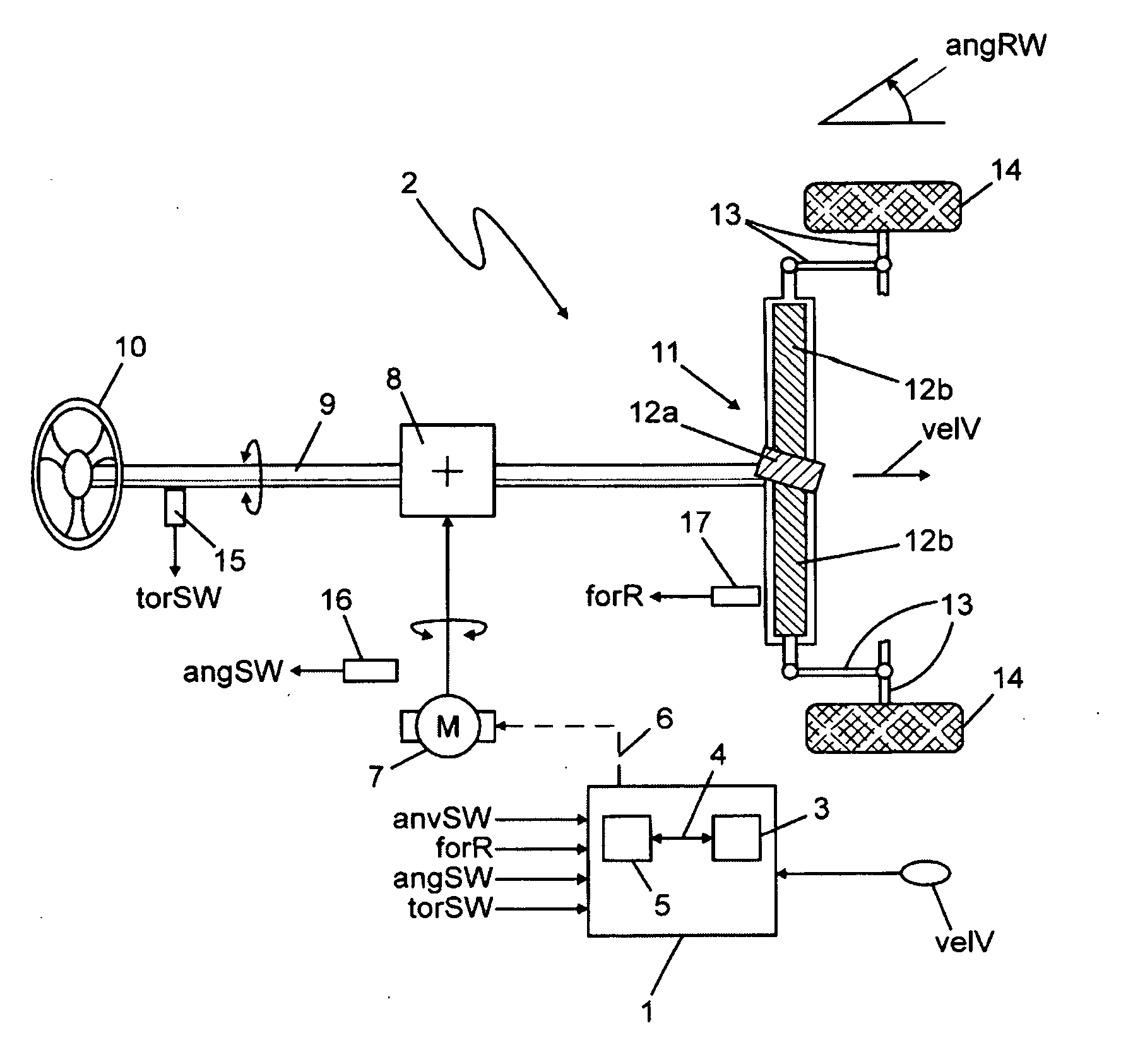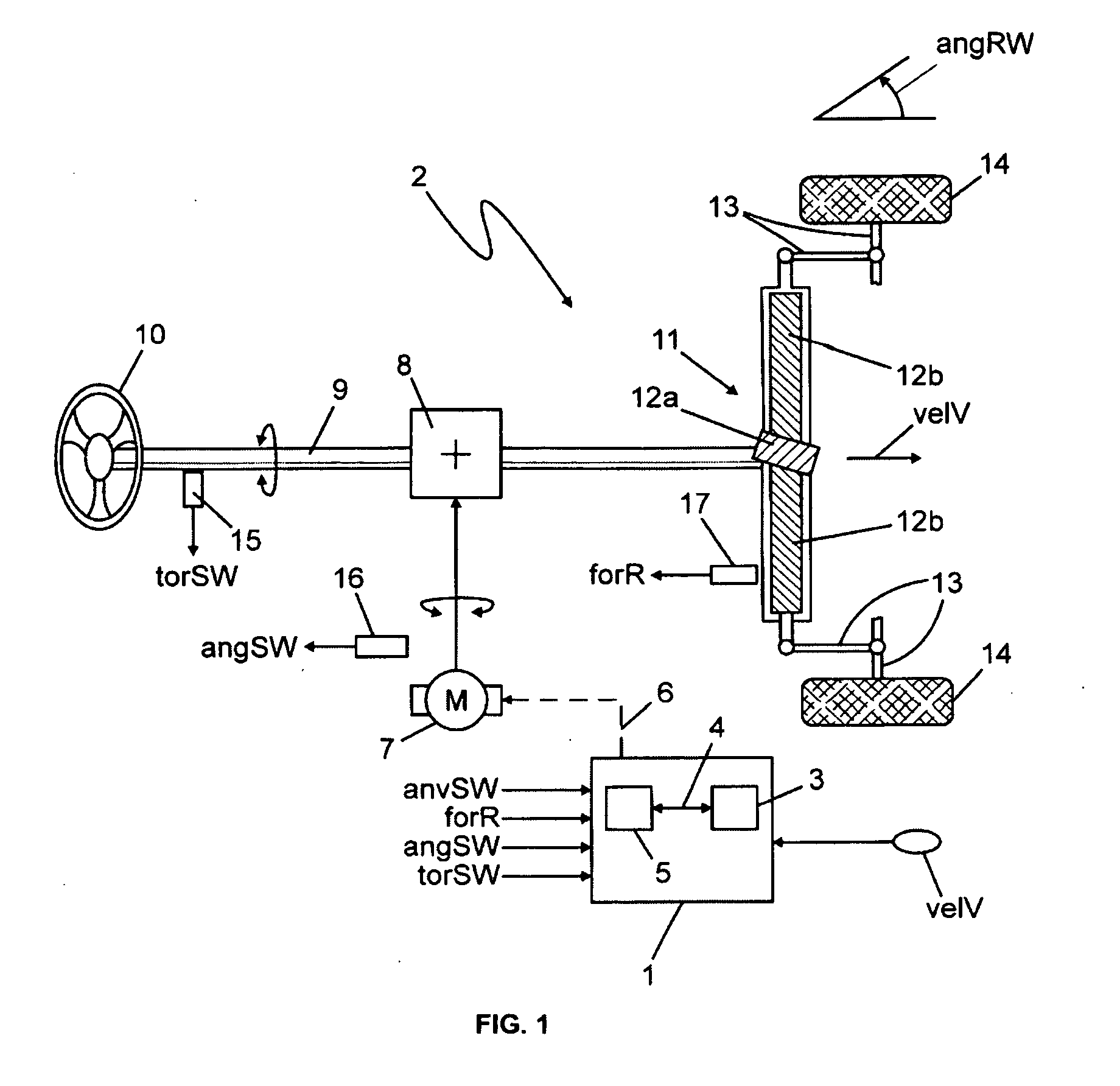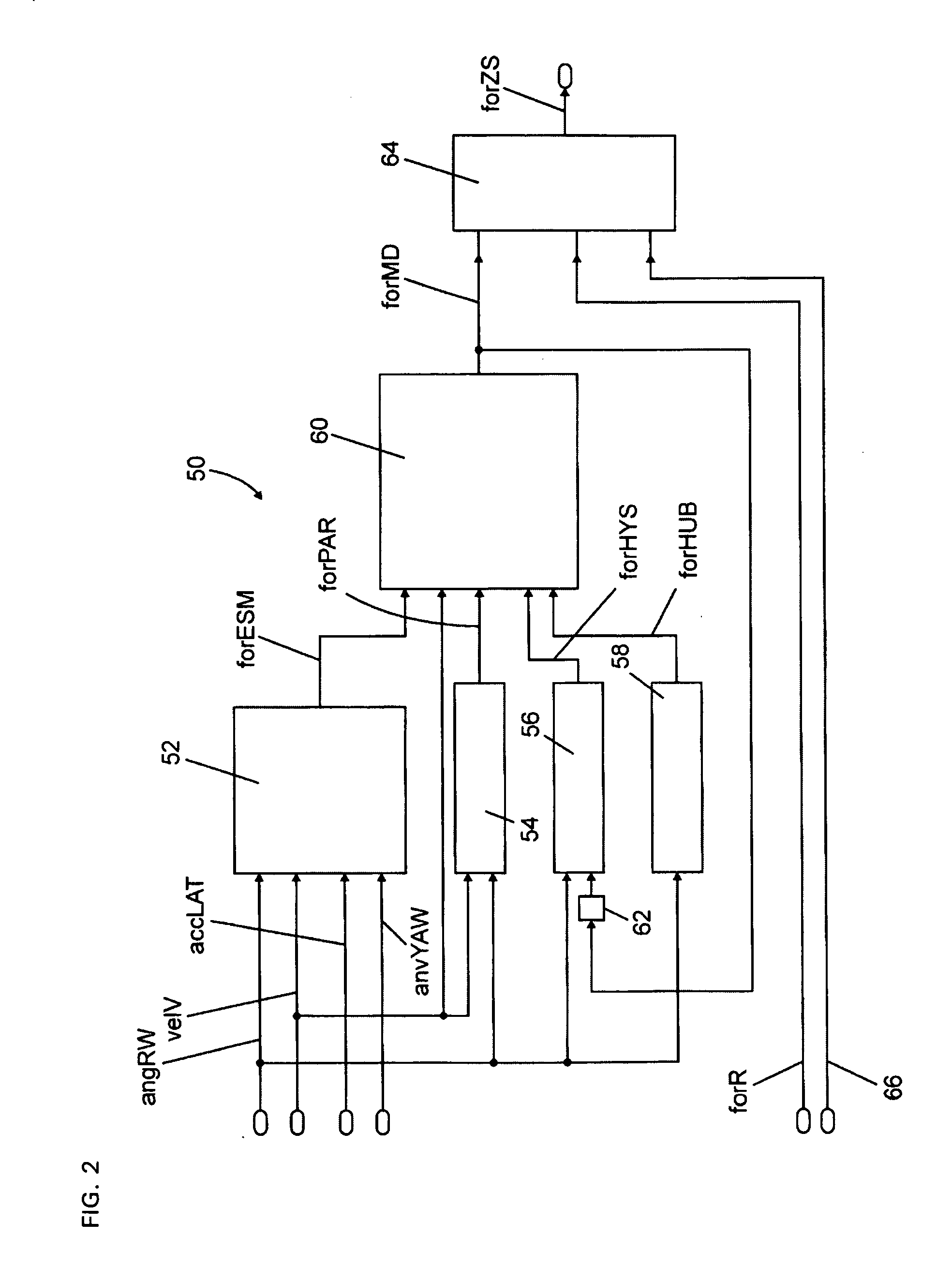[0014]The invention has the
advantage that information, which is reliable to as great an extent as possible, on the behavior of the vehicle or the conditions of the roadway can be transmitted to the driver of the vehicle at all times, even with varying driving situations or operating conditions, by finding the toothed rack force that is employed for generating the driver's desired steering torque as a function of models that have been optimized for the respective driving situation, wherein the toothed rack force is, or individual components of the toothed rack force are, generated by means of the models, as a function of the current driving situation.
[0016]Pursuant to the method according to the invention, the modeled toothed rack force and the actual toothed rack force can additionally be weighted as a function of a driving situation and / or
operating variables of the vehicle and can be combined to form a resulting toothed rack force, by means of which the target steering torque can be determined. It is thus possible to adapt the modeled toothed rack force to the actual toothed rack force, so that the modeled toothed rack force according to the invention always corresponds to the actual toothed rack force with sufficient accuracy, for example when the
friction coefficient changes, whereby optimal feedback can be provided to the driver at all times, without the disturbances present in the actual toothed rack force negatively influencing the driver's desired torque. This offers an
advantage is so much as the modeled toothed rack force according to the invention can be optimally found within a very wide range of possible driving situations. The actual toothed rack force used for the
adaptation can be determined by means of a sensor, or alternatively from other variables that characterize the steering device, or the forces acting thereon, and / or actuators.
[0041]A second model comprises variables for describing a vehicle parking process. This process differs significantly from normal driving situations and can, advantageously, be taken into consideration by way of the second model. The second model is activated as the vehicle speed decreases and, accordingly, is deactivated as the vehicle speed increases, wherein the activation and deactivation can be carried out by steadily increasing, or decreasing, the contribution of this component to the modeled toothed rack force. The parking process can, consequently, be determined particularly easily based on the current speed.
[0044]A fourth model describes at least one force, which is generated by raising the vehicle as a function of the wheel angle, and which acts on the toothed rack. This can further improve the modeling process. Depending on the axle construction, the front axle of the vehicle is raised due to the steering process, notably with larger steering angles. This results in a component of the toothed rack force in accordance with a respective
steering angle, notably during parking. It is therefore expedient to increase, or reduce, this force component depending on the vehicle speed. This component can thus also be used to generate the force component to be considered during the parking process.
[0048]Modeling can be further improved by adapting the lateral force that acts on the axle of the vehicle, using a modeled lateral force that is found pursuant to a single-track model, an additional lateral force component, and a
slip angle. This can be done, for example, by way of various mathematical operations, using non-linearities, and / or by way of controls. The accuracy of the method can thus be improved. It is proposed, in particular, to determine the additional lateral force component using the transverse
vehicle acceleration, the
yaw velocity and / or
yaw acceleration.
 Login to View More
Login to View More  Login to View More
Login to View More 


